It’s been three hours since you turned away from your computer screen. Your head has perked up, your eyes have reset and you’ve snapped back into reality. All of a sudden you notice your legs are hot. Wait, they’re a bit too hot. Your laptop stirs and whirs. The fan is panicking, shouting at you to stop. It, just like you, needed a break. It’s a chance to take a load off. Time to close some tabs.
If you use a computer for an extended period without closing any tabs, chances are it will overheat and potentially break. While we are not computers – not yet, anyway – a similar principle isn’t entirely out of the question. The more you put on your plate, the fuller you’ll feel. The more you over fill yourself, the harder it gets to move quickly and efficiently. Instead of moving through air, you’re moving through custard. Basically, things get more difficult.
In comes the 80/20 rule, otherwise known as the Pareto principle. In 1895, Italian economist Vilfredo Pareto found that 20% of Italy’s population owned 80% of the country’s wealth. On the face of it, Pareto’s findings have little to nothing to do with self-improvement. However, as is often the case in human being’s quest for greater achievement and prosperity, Pareto’s findings have been funnelled through the lens of personal and professional development, and with good reason.
The rule argues that 20% of your effort will result in 80% of your achievements. A CEO using this technique, for example, would select 20% of what they need to complete and do it themselves, delegating the remainder to others. For everyone else, it simply means dedicating most of your time and energy to the important tasks. Essentially, the Pareto principle encourages you to keep as few tabs open as possible to achieve maximum efficiency.
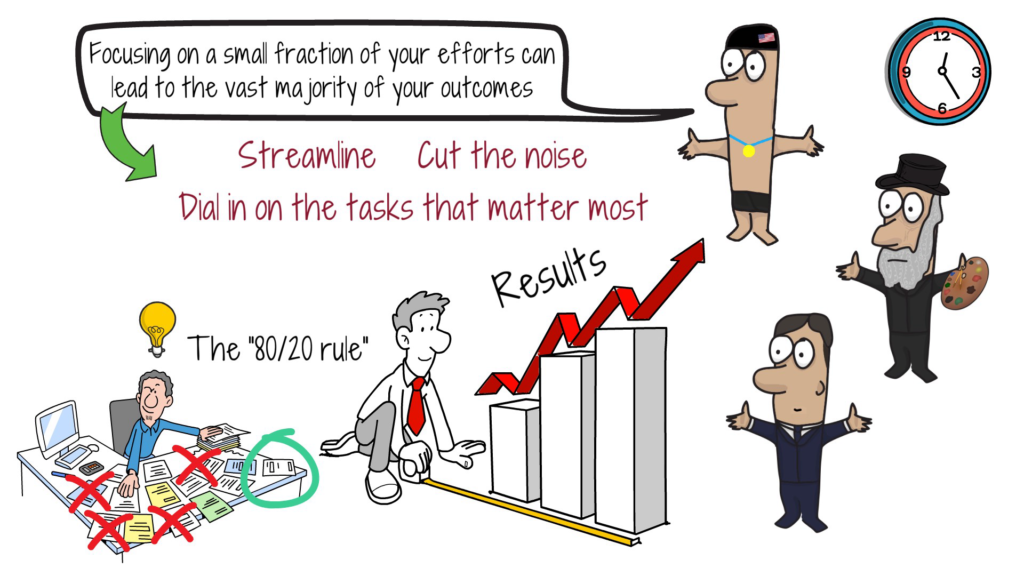
While the Pareto principle is often labelled the 80/20 rule, it doesn’t always need to follow that specific ratio. You can customise to your lifestyle – 70/30, 75/25, 85/15, for example. But it’s best to not get bogged down in the numbers. After all, who has time to quantify every single task into a percentage-based ratio? Instead, correct implementation of the Pareto principle requires a broad and in-depth understanding of what is required from all parts of your life, focusing on factors such as importance to you and/or others, as well as how difficult it is to complete. Remember, this ‘rule’ was derived from an economist’s findings during the Italian 1800s, so, as with all of these improvement ‘rules’ and ‘principles’ flying around the internet, take it with a pinch of salt. Make it work for you.
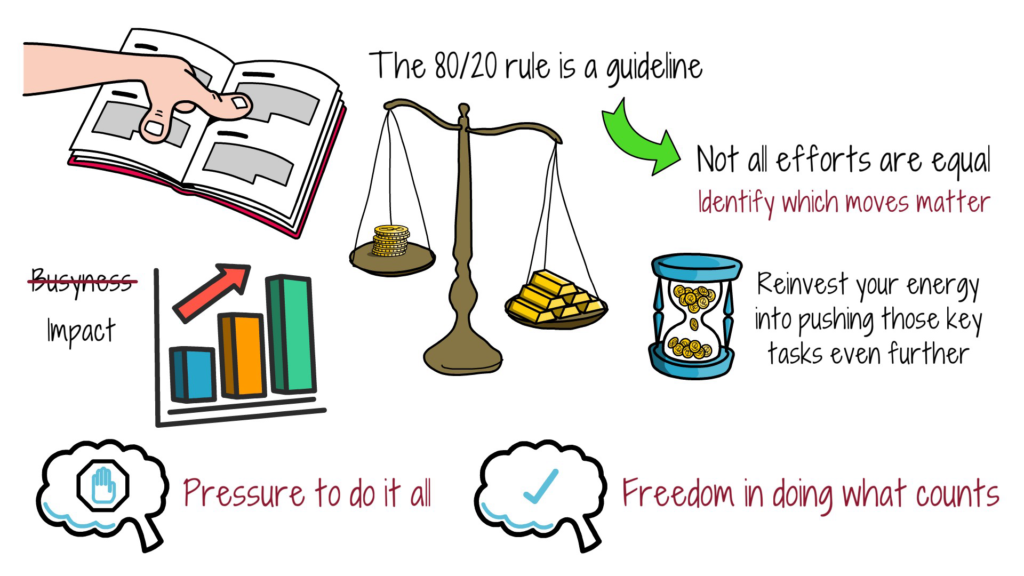
Now, with that being said, you’re likely curious as to how reducing your efforts can actually lead to a more fruitful existence. Well, allow this article to explain.
Prioritisation
Prioritisation is the most critical element for correctly implementing the 80/20 rule. It helps you identify the most impactful tasks or activities to ensure you’re always working on what matters most. There are many ways to figure this out. For starters, a simple list of your tasks with categories of importance is a helpful tool to help you see what you should be working on. Then there are the more extensive, detail-laden prioritisation techniques.
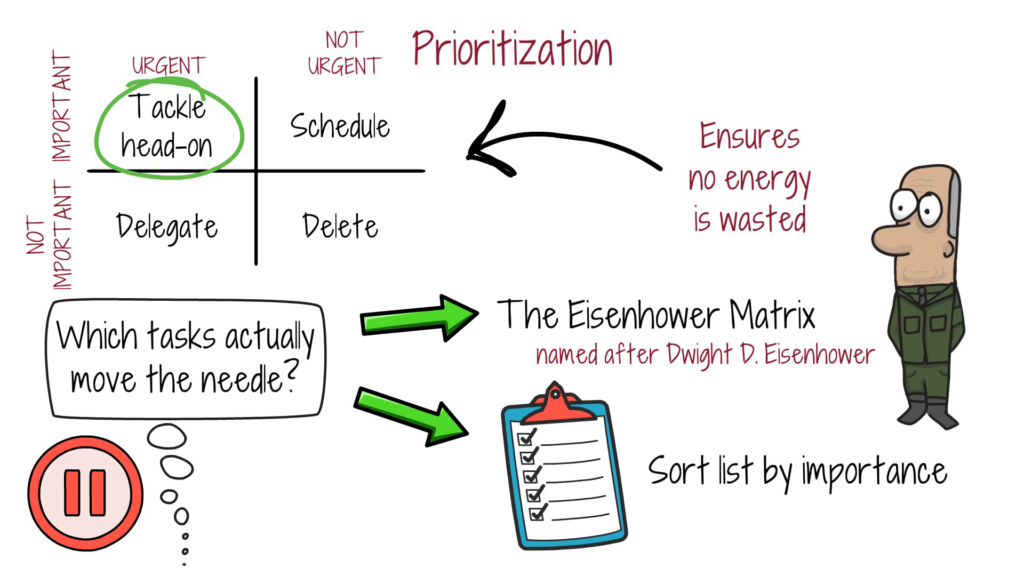
The Eisenhower Matrix, for example, is one of the more notable tools. A result of the eponymous former President Eisenhower’s hectic schedule, the Matrix supposedly enabled him to clearly see where he needed to send his attention. It was split into four categories: important, not important, urgent, and not urgent. These led to four actions: do, schedule, delegate, and delete. While it’s unlikely you’re a former US general and president rolled into one, Eisenhower’s task management system can come in handy for whoever uses it. Under the guidelines of the Pareto principle, the 20% should come under the ‘do’ section: AKA tasks that are important and urgent. Things you can offload (delegate and schedule) are unlikely to bring the fruitful, 80% results you’re after. Not yet, anyway.
Remember, understanding what you should actually spend your time and energy on before you waste any is as vital as completing the task itself.
Efficiency and Productivity
By focusing on the 20% of tasks that yield 80% of the results, peak performers can achieve more in less time. However, as already discussed in this article, you must be able to highlight exactly what provides that 80%. When starting your day, for example, it makes sense if you focus on the tasks that don’t necessarily bring about the big results. It’s nice to start the day off with small wins, even if they’re inconsequential in the long run. So, to improve your efficiency and productivity, you must first understand what will have the biggest impact. It may look different to other people – remember, this principle is an umbrella term, it’s what you do with it that matters. For example, a morning spent writing might bring you most of the results you need for the day. Or perhaps some exercise sets you off into an afternoon of productivity. There’s no way to measure it for everyone – the individuality of your life will help shape your structure.
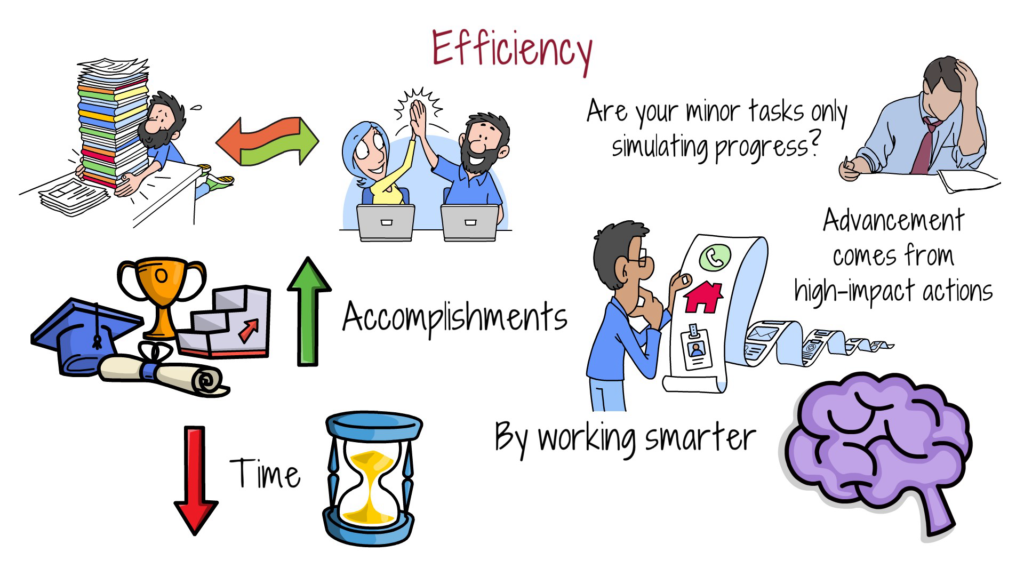
Resource Allocation
Your energy and time aren’t indefinite factors in your ability to achieve peak performance. While ‘resources’ in of itself might seem like a money-draining term, you don’t need to be rich to offload some of the pressure on yourself. It’s all about scaling: with smaller scale performance and minimal responsibilities, there’s likely to be smaller costs and less money involved. This is where you utilise time-saving resources, such as AI tools, time-management apps and so on. These are cheap, sometimes free ways of giving you some time and energy back. When the scales are bigger, for example, you can outsource more by hiring assistants and delegating.
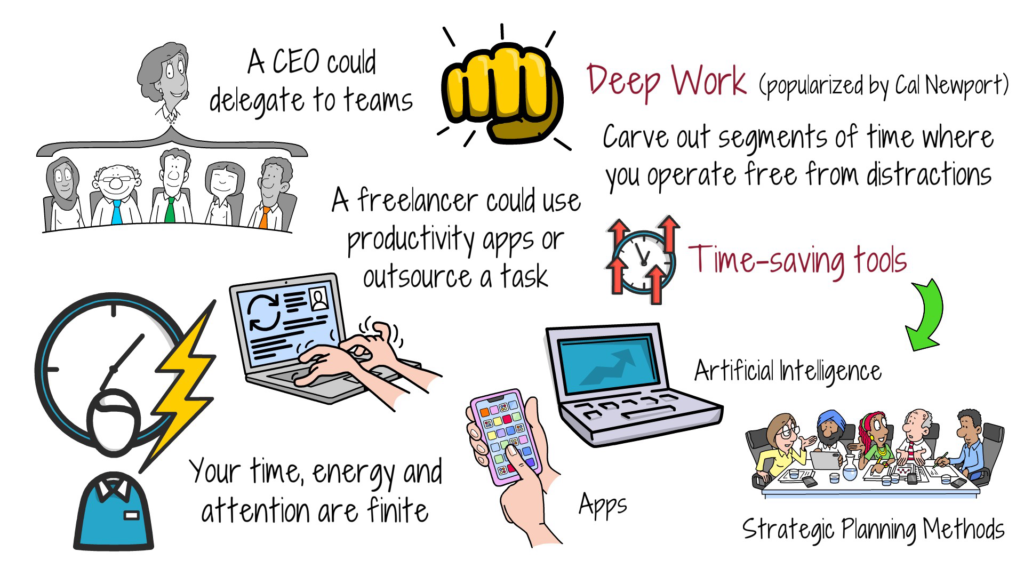
In reality, your main resources are your time and energy. When you’re able to save as much of both as possible, the 20% target you’re aiming for will be much more achievable. With those time and energy resources preserved, you can create scenarios where you’re much more likely to make an impact in the 20% of work you do, meaning there’s a higher chance you’ll hit the 80% results goal. Being too tired and running out of time probably means you’re stretching yourself too thin – a core factor the 80/20 rule opposes.
Enhanced Focus
Just because the Pareto principle says you should only do 20% work for 80% results, it doesn’t mean you should slack off. Instead, it means you should put 100% of your focus into the most fruitful of your tasks. Recognising the vital items on the weekly itinerary allows peak performers to eliminate distractions and maintain a laser-sharp focus on what truly drives results.
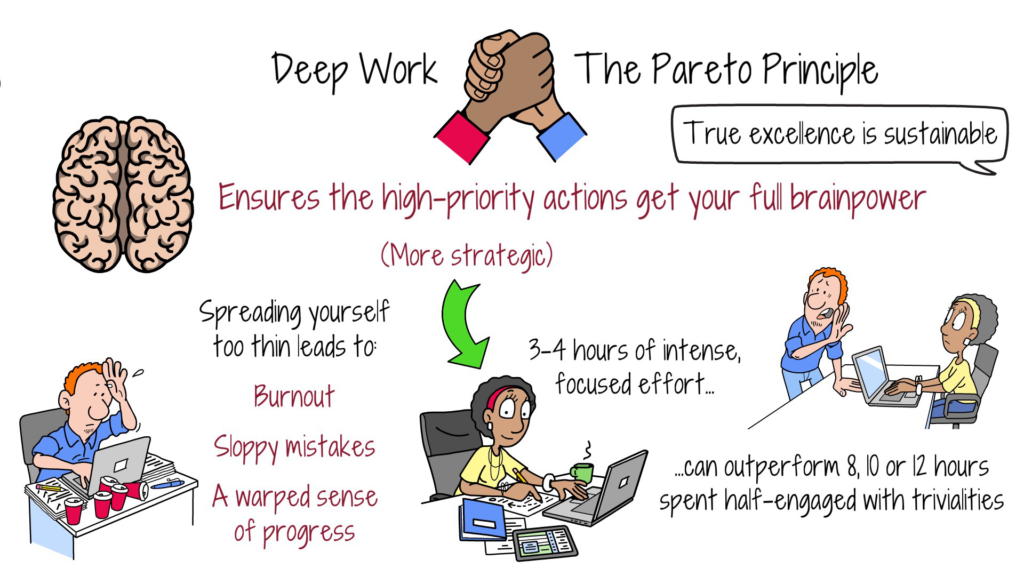
Psychologist and author of Deep Work, Cal Newport, has famously shed light on this concept which he calls ‘deep work,’ as you probably guessed. In his book, Newport outlines why 3-4 hours of intense, distraction-free work will put you within reach of the 80% results bracket. Essentially, ‘deep work’ as a concept marries well with the Pareto principle. Similarly to the concepts derided from Pareto’s findings, Newport argues that you won’t get as much work done in one long, 8-hour day compared to shorter but much more intense bursts. This way you can conserve the two all-important resources: energy and time. Pareto’s principle and Newport’s work highlight the disadvantages of working every available hour you can. If anything, that will set you back more.
Peak Performance Doesn’t Require Excessive Working
What a lot of ‘inspirational’ writers on LinkedIn may not understand is that yes, hard work is necessary to achieve peak performance in any sector of your life, but that doesn’t mean you need to or should claw away at your time and energy in a relentless pursuit of success. Instead, long-term peak performance requires an understanding of where you should direct your time and energy. When you know which parts you must focus on the most, put your all into it. Attempting many different things at once all with 100% effort is admirable but not sustainable and could ultimately lead to burnout – the crux of any aspiring peak performer.
So, next time you feel there are dozens of tabs open in your head, bookmark and pin the ones that will make a lasting difference.
